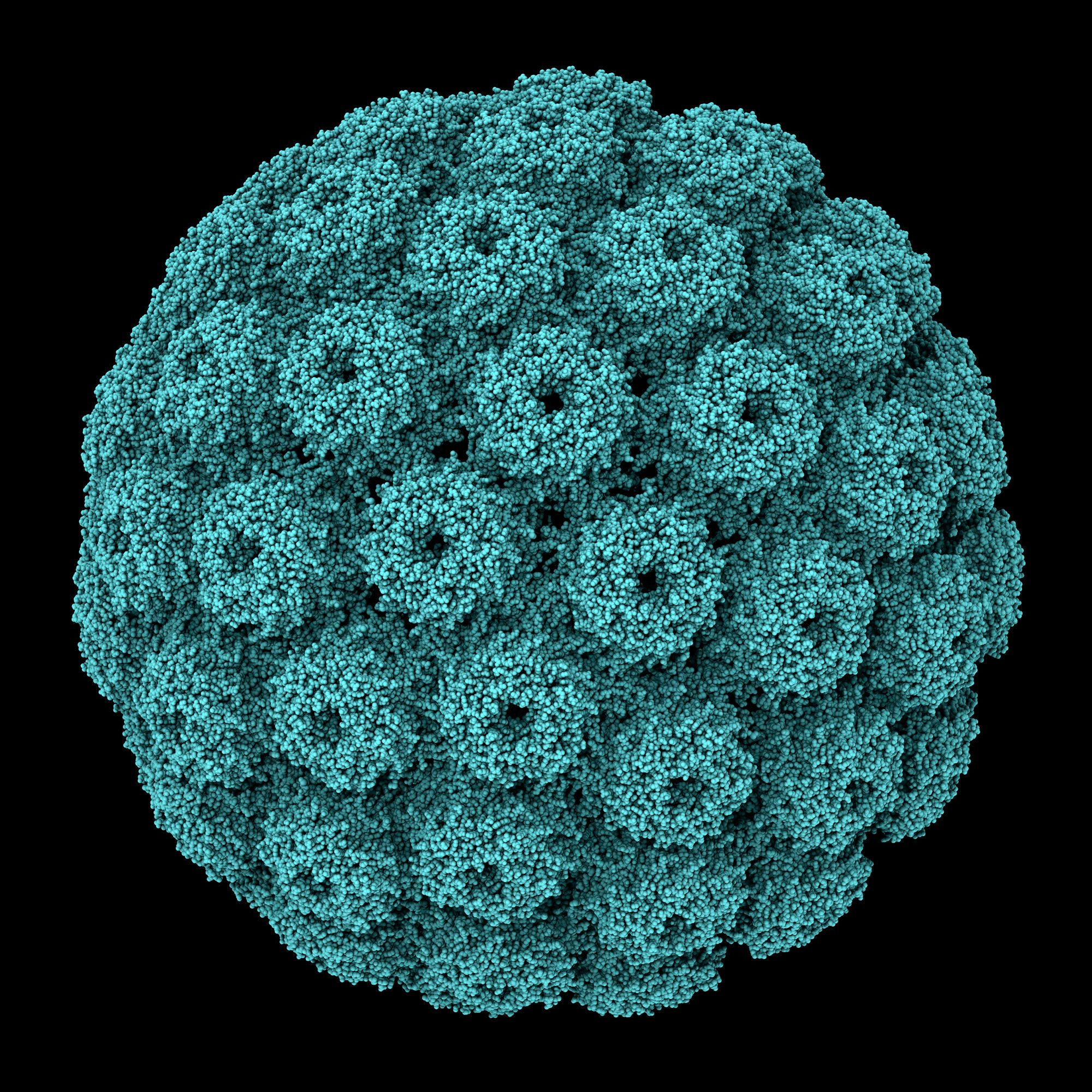
What is Simian Virus 40?
Simian virus-40, translated also monkey virus 40, is a virus from the group of Polymaviridae. The virus is mainly known under the abbreviation SV-40.
Simian virus-40 was discovered in 1960 in the cell cultures of kidney cells from rhesus monkeys, which were used to produce the polio vaccine. Between 1955 and 1963, several million people were probably vaccinated with the injectable and oral vaccine and thus infected with simian virus-40. The Simian virus-40 occurs in primates as well as in humans. The natural hosts of SV 40 are mainly rhesus monkeys and the Asian macaques.
What is the structure of simian virus-40?
The Simian virus-40 is a small, approximately 5.2 kb, DNA tumour virus with an isosahedral capsid and a double-stranded DNA genome. The closest relatives are the two human polyomaviruses, the JC virus and the BK virus. These viruses are identical in the large T antigens of the simian viruses in about 75% of their amino acids. At the nucleotide sequence level, the polyomaviruses showed homology of about 70 %. The lowest similarity is in the sequence of the regulatory region.
What is the medical significance of simian virus-40?
Like other polyomaviruses, simian virus-40 can cause tumours under certain conditions. In most cases, however, an infection remains completely asymptomatic. In humans, no direct connection between an SV40 infection and the development of a tumour has been proven so far. However, oncogenes of the Simian virus-40 play a major role in the development of cancer cells from human cells in a cell culture. However, a connection between human tumours and the simian virus 40 as the cause could not be established beyond doubt . A clear proof of SV-40 in different tumours could not be provided so far.
It is suspected that SV-40 was transmitted to humans in the late 1950s and early 1960s through contaminated polio vaccine. Approximately 100 million people worldwide received this vaccine at that time. To date, the SV-40 has been detected in people from southern Europe, America and Japan . The virus is transmitted via saliva or other body fluids. During this period, the observation could be made that the incidence of non-Hodgkin's lymphoma has almost doubled. For which, however, there is currently no valid explanation .
For which diseases is the simian virus-40 supposed to be causative?
According to critical evaluations of epidemiological as well as virological data, points to a connection between SV-40 and certain types of cancer in humans. To be able to prove this aetiology with certainty, some additional studies are missing. According to a statement by the World Health Organisation, Simian virus-40 is believed to be the cause of the following human tumours:
- Mesotheliomas,
- Osteosarcomas,
- rare brain tumours.
The
contamination of vaccines was discovered, as mentioned above, in
1960. After this, undoubtedly, terrible discovery,
the WHO reacted immediately and included measures to exclude SV-40 from polio
and other vaccines, as a requirement for the manufacture as well as
quality control of polio vaccine. These requirements
have been consistently applied by vaccine manufacturers because
for more than 30 years, polio vaccines produced in kidney cells
from monkeys have proven to be completely free of
Simian virus-40.
The novel and highly sensitive PCR tests were used to provide evidence that there was no Simian virus-40 left in the polio vaccines. Even today PCR tests are used in the production of polio vaccines .
Epidemiological studies conducted between 1960 and 1974 could not find a link between human tumours and Simian virus 40. More recent epidemiological data from the so-called tumour registers, which cover over 60 million person-years of observation, have also been unable to find a connection. No differences were found in the tumour incidence that could also be attributed to the SV-40-contaminated polio vaccines.
It is completely unclear whether Simian virus-40 strains present and detectable in the human population today are still linked to the use of the polio vaccine at that time. Despite almost 40 years of observation it has still not been established with certainty that the simian virus-40 contamination of some of the early batches of the vaccine had any negative impact at all on the health of the population
In summary, based on PCR analyses, there is no evidence "for" or "against" a link between SV-40 and a range of human tumours . Moreover, to date there is no reliable epidemiological and serological evidence for the association between simian virus-40 contaminated vaccines and the incidence of human tumour types corresponding to tumours induced by SV-40 in hamsters .
Is there a link between simian virus-40 and non-Hodgkin lymphoma (NHL)?
Especially the non-Hodgkin lymphomas have increased enormously in frequency in the past 30 years. Although no risk factors are definitely known , there is always speculation about the viral cause. The Simian virus-40, which induces tumours in laboratory animals but is also capable of infecting humans , is also repeatedly brought into play here.
In two recently published studies from the USA , thanks to PCR analyses, the SV-40 T antigen was associated with in more than 40 % of the tissue samples from NHL. In contrast, in a large Japanese study, only 11 - 19 % of tissue samples could be linked to the SV-40 in . And in previous studies conducted it was only 10 - 15 % of all samples that suggested a simian virus-40 .
